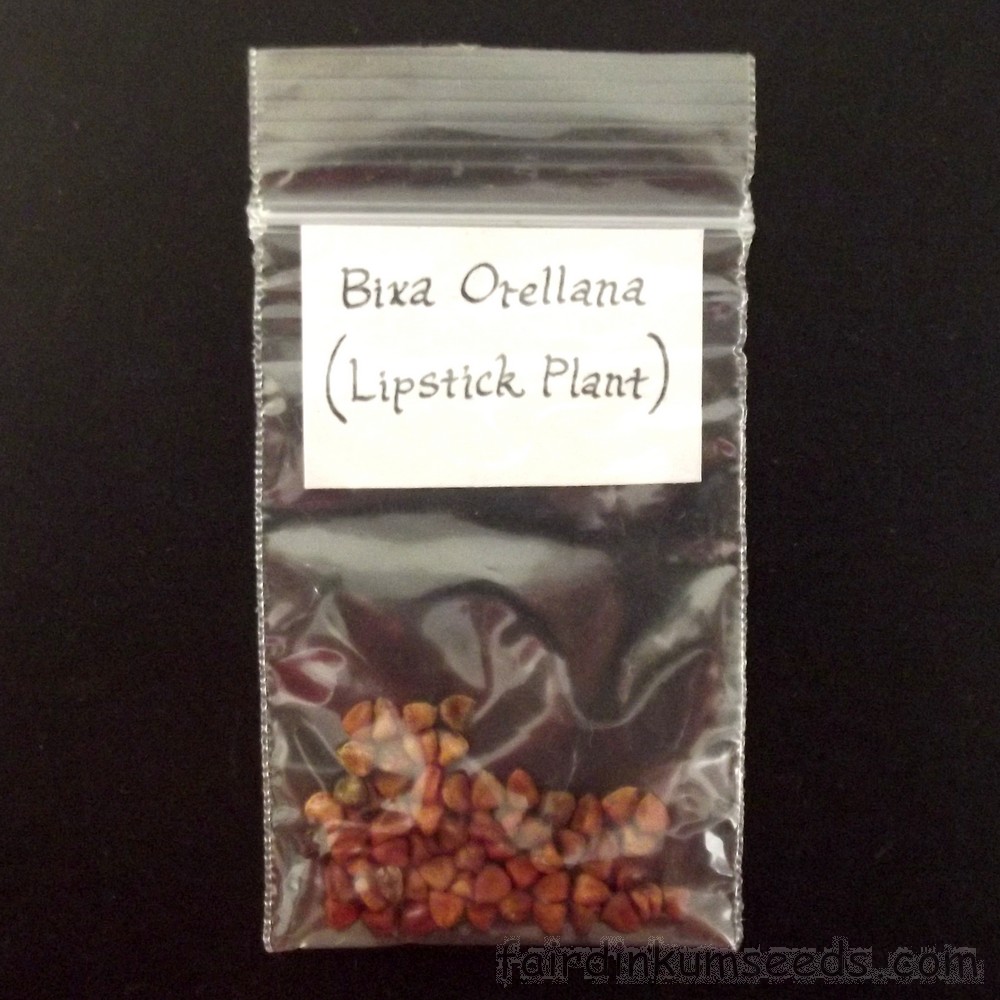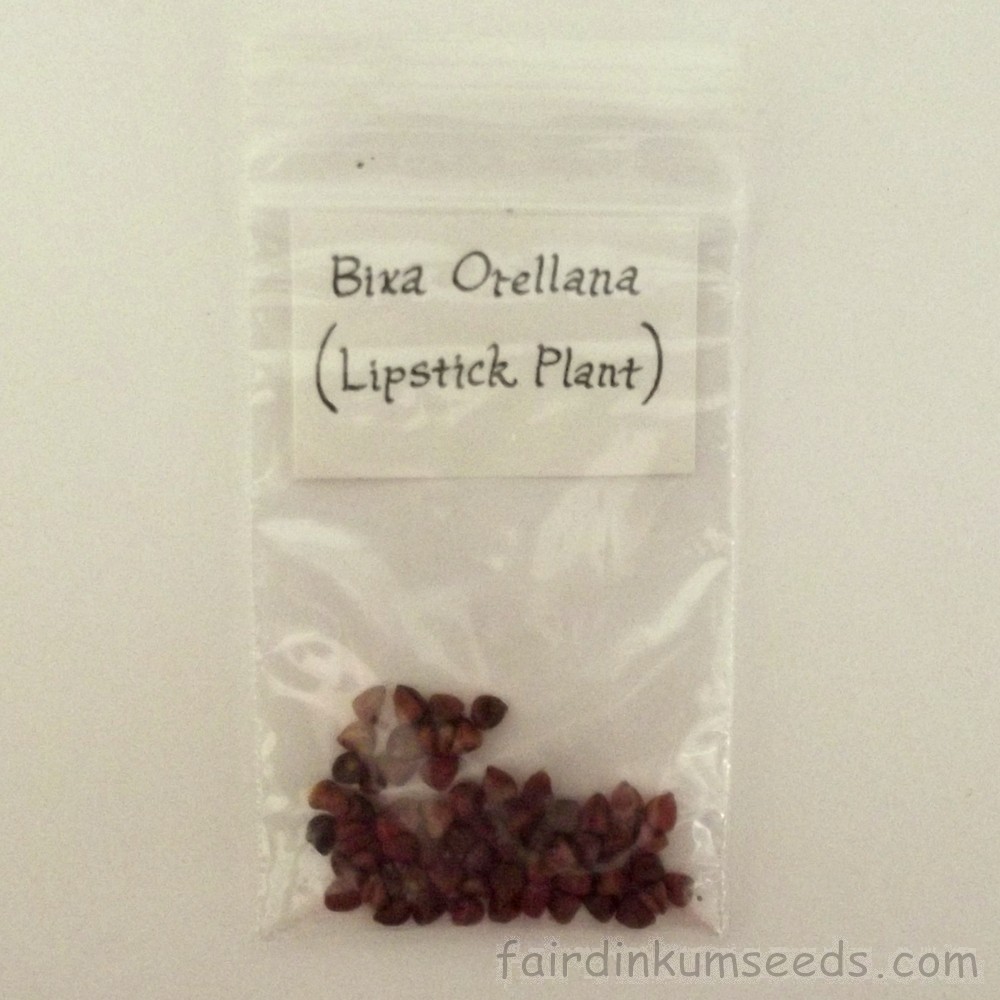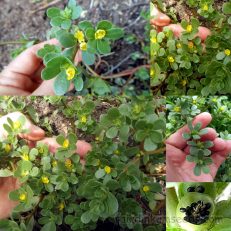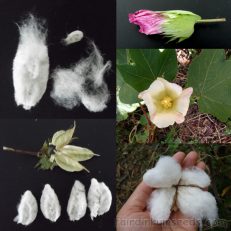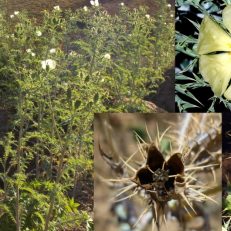Please read text!
Lipstick Plant Achiote Annato Bixin Bixa Orellana Seeds
Packet of 25+ seeds of this beautiful and useful, medicinal plant!
I got these guys from a friend of ours and have started a heap of seedlings for us, just like in the picture.
Germination took about a month in potting mix with a little sand in it, seeds buried about 1cm deep, and watered every 3-5day.
Very excited to add these to our growing collection as I had been searching for them for a while.
I did try importing some seed a few times, but didn’t have any luck with them? Maybe old or heat treated, not really sure because they did look alright, but doesn’t matter now!
Widely used as a medicinal in many cultures and here is some data I pinched off the internet>>>
The seed is used in Argentina for diarrhea, fevers, heart support.
Brazil for burns, constipation, fevers, heartburn, hepatitis, malaria, stomachache, urinary insufficiency.
Columbia as an antivenin, aphrodisiac.
Cuba as an aphrodisiac.
Guatemala for gonorrhea.
Haiti for fever and as a douche and insect repellent.
Mexico for burns, constipation, digestion, dysentery, epilepsy, erysipelas, fever, gonorrhea, headache, inflammation, malaria, sore throat, tumors, urinary insufficiency, vaginitis, venereal disease, wounds, and as an aphrodisiac, astringent, and insect repellent.
Paraguay as an insecticide and insect repellent.
Peru for conjunctivitis, cystitis, dysentery, epilepsy, fevers, high cholesterol, digestion, hypertension, obesity, prostatitis, renal problems, urinary problems, urogenital infections, wounds, and as an antiseptic, aphrodisiac, astringent, and dye.
Trinidad for diabetes, dysentery, flu, jaundice, renal insufficiency, skin disease, venereal disease.
And everywhere else for blood cleansing, cancer, diabetes, dysentery, fever, kidney problems, parasites, skin disorders, to stop bleeding, and as an aphrodisiac, astringent, dye, and cosmetic.
The leaf is also reportedly very useful as well with documented traditional use as an Antacid, Hypocholesterolemic (lowers cholesterol), Anti-inflammatory, Antiseptic, Aperient (mild laxative), Aphrodisiac, Astringent, digestive Stimulant, Diuretic, Febrifuge (reduces fever), Hypotensive (lowers blood pressure), and all round wound Healer, due to its natural Antibiotic properties.
Historically, and still to this day, it is used as coloring in many Cheeses like Cheddar, Gloucester, Red Leicester, and even American cheeses like Velveeta.
Currently used in the colouring of literally tonnes of manufactured and processed foods like Margarine, Custard powder, Chips, Popcorn, Baked goods, Seasonings, Snack foods, Marinades, Breakfast cereals, Candy, Smoked fish, Pasta and ANYTHING RED or YELLOW. Everything that comes in a packet and says “Natural food colour” pretty much.
There is some data that has been “copied and pasted” all over the internet about potential allergic reactions in a VERY small minority in people.
BUT, all that data that I have seen is from CHEMICALLY extracted and concentrated forms of the dye used in bulk food manufacturing, and was found to be inconclusive.
OR from tests done on people that ALREADY have chronic and ongoing allergic reactions to multiple everyday items.
I would think its pretty obvious that if you break out in hives from just about everything you come in contact with, its not really a good idea to get a big gut full of a chemically extracted dye……
Maybe that’s just me?
I have seen no data about allergic reactions to the actual plant or pod, or from foods containing water extracted coloring.
If you place the seeds in water, and mix it up a bit, the water goes red.
Remove the seeds, dry out the water and you have a natural colouring, dye, medicine and body paint that has, and is being used, to this day, with no issues.
If you then crush the seeds, you get an oil that is a rich source of tocotrienols, which are a special antioxidant that is similar in structure and function to vitamin E.
The tocotrienols from Bixa Orellana are the subject of current nutritional and medical research since these compounds are thought to prevent cancer due to their anti-angiogenic effect.
The Bixa seed, UNLIKE Palm oil or Rice bran, does not contain ANY tocopherols so it is a natural source of pure tocotrienol compounds.
Very interesting future for this one I reckon, especially as they crop so well with some mature plants producing 250kg+ a season!
That’s off an area of a couple meters, which comparing that to Canola or other conventional oil seed crops is just amazing!
Grown by a couple friends of ours (and now by us as well) organically, with no nasties, no chems, no problems!!!

